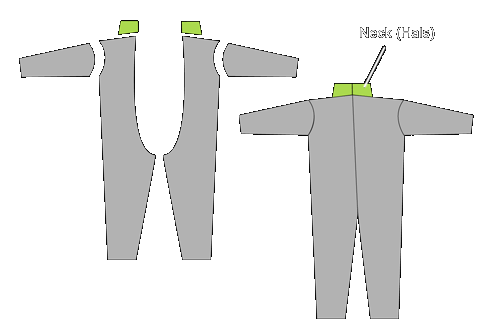| 1. The basic pattern |
|
 |
For the body I first did a character sheet of Savoy from both sides. Then I got large pieces of paper, and some cheap cloth (from IKEA) for creating the pattern. Thank you to Furvan and Tioh, I would not have been able to make the body without your help. :) |
    |
|
|
|
| 2. Multi colored fur (markings) |
|
 |
Savoy has quite a complicated fur pattern, which means - many many single pieces of fur! I did not count them, but there were more than 40 pieces. NOTE! Pay attention to the running direction of the fur before cutting! |
    |
|
    |
|
|
|
| 3. The neck |
|
 |
If you did not attach longer pieces of fur to the head which will cover your neck, you will need to add a neck to your body suit. Otherwise you will see the hole. I close the attached neck part at the front (under my chin) with some press studs. |
 |
|
| 4. The Tail |
|
| The tail construction is made of pieces of a camping mat glued together, and attached to a kidney belt. The longer the tail is, the less bouncy it will be (because of the weight). For filling I used some light fill material you get at creative stores. The tail itself is attached to the body, but you can take out the inner construction. You can also make the inside of the tail with foam to get a more stable, bouncy form. I haven't tried this yet. |
|
    |
|
| 5. The Paws |
|
| For the front paws I just traced my hands on the fur, cut it out, and sewed the parts together. For the paw pads I used pink foam rubber, which I first painted with latex milk, but the latex also came off during the time. |
|
    |
|
| For the back paws I used normal shoes, glued foam blocks on them (hot glue), then cut out the forms (toes), and glued fur on them. These are outdoor shoes. The paw pads came off again pretty soon, as the foam rubber is not very resistent to damage when you walk around on the street with them. For the claws I used black FIMO. I have a second pair of paws for indoor, made by WhiteyFawks (Arend Studios). These also have fur and paw pads on the soles. |
|
    |
|